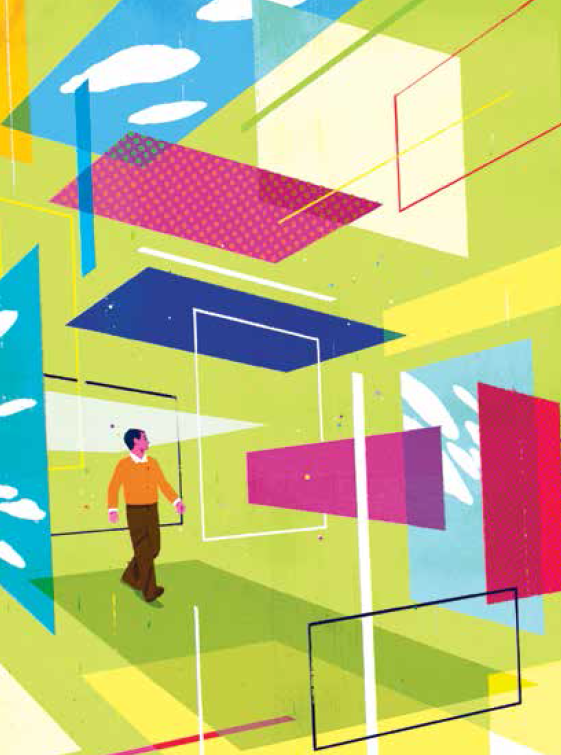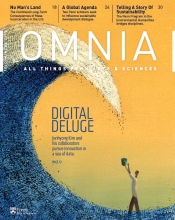Before you set out for your next hike, make sure you bring sturdy boots, ample water, and an understanding of the cognitive underpinnings of your sense of direction.
In order to navigate successfully, your mind must work out two problems simultaneously: knowing your current location and understanding which direction you are facing. Most people think that locating themselves spatially is a single thought process, but the cognitive logistics are more complex than that, says Professor of Psychology Russell Epstein.
In an article published in the Proceedings of the National Academy of Sciences in the United States in May, Epstein and his team showed that animals’ internal map and compass work independently. Specifically, they demonstrated that mice use one brain process for place recognition and another for knowing which way they were facing.
The team included former Penn colleague Isabel Muzzio, now of the University of Texas, and two graduate students, Joshua Julian and Alexander Keinath.
“Our work has the potential to build a robotic navigation system that helps blind people find their way,” says Epstein. “In the future, it may also be used to help diagnose Alzheimer’s because spatial memory is among the first brain functions to break down, so problems with navigation are an important symptom in detecting the disease.”
Epstein’s experiment was an updated version of one of the original studies of spatial orientation, conducted at Penn by psychologists Ken Cheng and Randy Gallistel in 1986. The original study showed that when vertebrates (in that case, rats) were spun around so that they lost their sense of direction and then placed into a rectangular room, they were able to use the shape of the room to recover their sense of direction.
Epstein’s updated version of the experiment further refined the understanding of the reorientation process. Mice were trained on the location of food in two different rectangular rooms, each of which had a unique “wallpaper” on one of the four walls. In order for the mice to find the reward they had to solve two problems: First, which chamber am I in? And second, which way am I facing? The mice used the wallpaper to figure out which chamber they were in, but they ignored it when figuring out which way they were facing. To solve the directional problem, they only paid attention to the shape of the room.
Epstein is now using neuroimaging in humans to further his work. “Ultimately, we want to understand the same process in people, he said. We want to map the parts of the brain related to spatial ability.”
Epstein noted that although people vary quite a bit in their spatial ability, they are good at self-assessment and knowing their own skill at being able to navigate. While a sense of direction might be considered a form of intelligence, it is independent of general intelligence.
“You can be intellectually brilliant and have poor spatial ability,” he says. Epstein’s experiments parse the infinitely complex workings of the brain, and illuminate the mysteries of cognitive function.
“Science tries to carve nature at its joints and figure out component parts,” he explains. “Our work is a contribution to that endeavor.”




